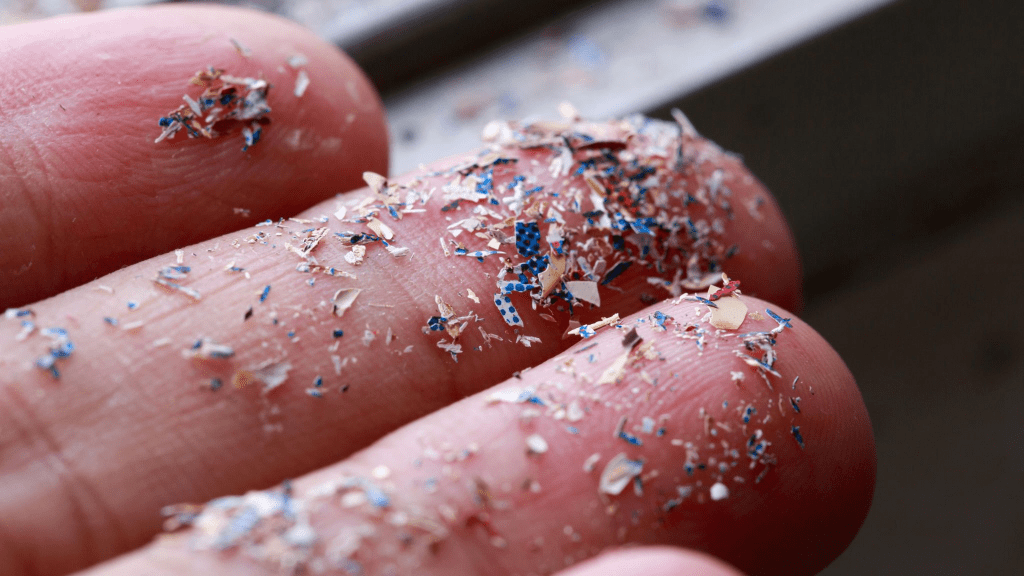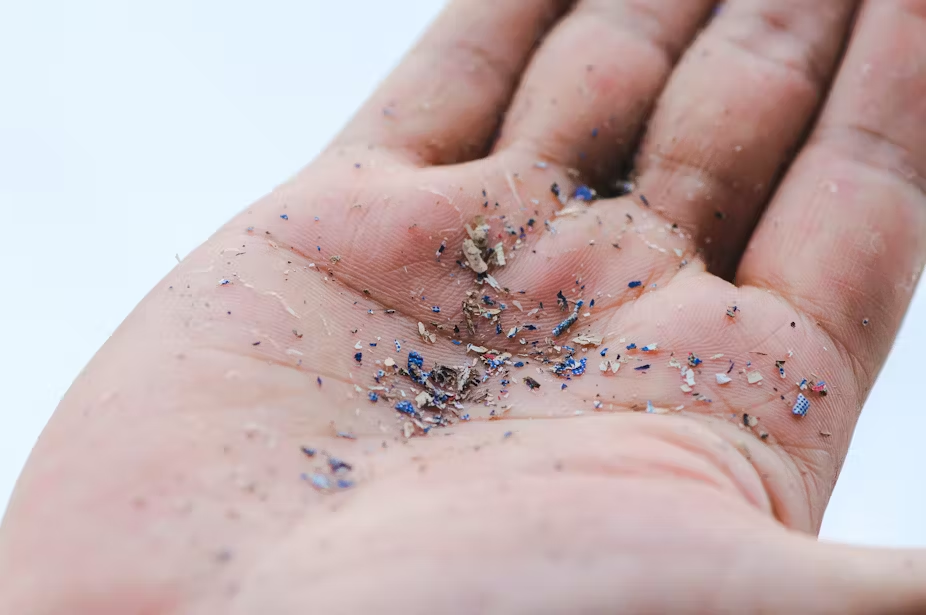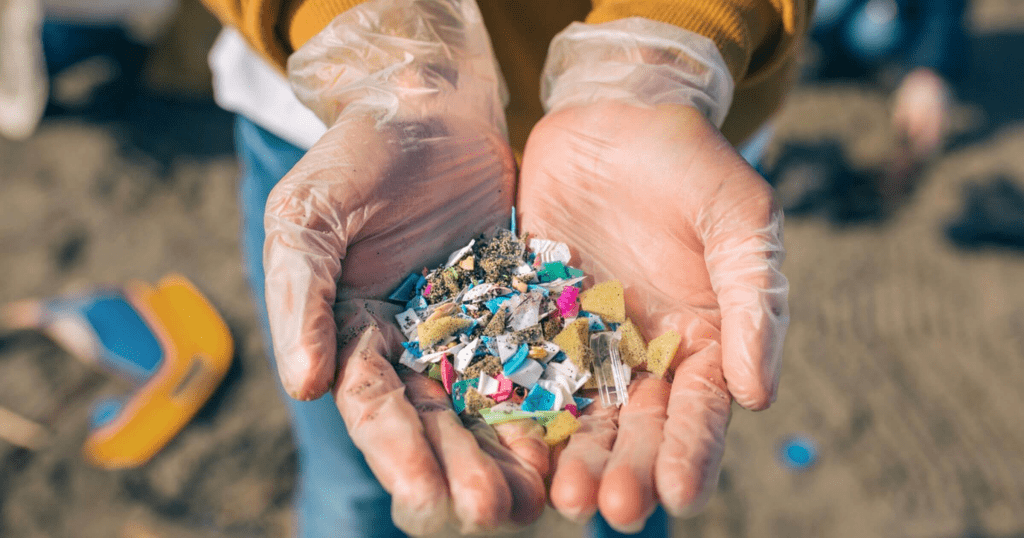In a groundbreaking discovery, scientists have found microplastics in human blood, raising serious concerns about the long-term health implications. This revelation has stunned researchers, who believe these tiny particles could potentially harm our bodies in ways we have yet to understand. The presence of plastic particles in our blood may signal an alarming reality for our health and our environment. Let’s dive into what this discovery means and why scientists are urging immediate further research.
What Are Microplastics, and How Do They Enter Our Blood?

Microplastics are small plastic particles less than five millimeters in size, formed from the breakdown of larger plastic waste. They are found nearly everywhere—from oceans and rivers to the food we eat and the air we breathe. Due to widespread plastic pollution, these tiny particles are now circulating in our environment at unprecedented levels.
Researchers have previously detected microplastics in human feces, signaling that we consume these particles through our diet. They can be ingested through food and water, inhaled from the air, and even absorbed through the skin. The latest study, however, shows for the first time that microplastics are not just passing through our digestive systems—they’re making their way into our bloodstream.
The Alarming Findings of Plastic in Blood
Scientists at Vrije Universiteit Amsterdam conducted a study on blood samples from 22 healthy participants and found microplastic particles in nearly 80% of the samples. Out of the 22 individuals, 17 had microplastics present in their blood. The most common types found were:
- PET Plastic: Present in 50% of the samples, this plastic is commonly used in drink bottles.
- Polystyrene: Detected in 33% of the samples, often used for food packaging and disposable products.
- Polyethylene: Found in 25% of the samples, this plastic is a primary material in plastic bags.
This research marks a significant breakthrough, confirming that these particles are now circulating throughout our bodies. Professor Dick Vethaak, an ecotoxicologist leading the study, called this discovery “a pioneering study” but stressed that it’s only the beginning. He noted that the amount of plastic in the blood varied between participants, yet the presence of these particles is concerning enough to warrant further investigation.
What Happens When Microplastics Enter the Bloodstream?
While the full impact of microplastics on human health remains unknown, scientists are concerned about the long-term effects. Once in the bloodstream, microplastics may be transported throughout the body, potentially lodging in vital organs. This movement raises several pressing questions:
- Can Microplastics Accumulate in Organs? Researchers are worried that these particles could gather in organs like the liver, kidneys, or even cross the blood-brain barrier, posing risks to our health.
- Are Microplastics Linked to Disease? Laboratory tests have shown that microplastics can cause cellular damage. Scientists are exploring whether these particles could trigger inflammation, disrupt hormonal functions, or contribute to diseases like cancer.
- How Long Do They Remain in the Body? The lifespan of microplastics within the human body is another unknown. If they accumulate over time, they could pose a more significant risk to human health, particularly if they have adverse effects on cells and tissues.
Babies and Children: The Most Vulnerable to Microplastic Exposure
Children, especially infants, are thought to be more vulnerable to microplastic exposure than adults. Research has shown that microplastic levels are ten times higher in babies’ feces than in adults’. Babies ingest microplastics through food, toys, and even feeding bottles, which release tiny plastic particles into formula milk. Professor Vethaak expressed particular concern for babies and young children, noting, “We know that babies and young children are more vulnerable to chemical and particle exposure. That worries me a lot.”

This vulnerability is further compounded by children’s developing bodies, which may be less equipped to process and eliminate foreign particles. The unknown impact of prolonged exposure on growth and development highlights an urgent need for more research on microplastics’ effects on children’s health.
The Link Between Microplastics and Air Pollution
Microplastic pollution is not an isolated issue; it’s intertwined with the broader problem of environmental pollution. The same way pollutants from car emissions or industrial waste enter our lungs, microplastics can make their way into our respiratory system. Studies have shown that air pollution alone contributes to millions of premature deaths worldwide. When we factor in the additional threat of inhaling microplastics, the risks to public health become even more severe.
As we breathe in particles from plastic waste, these plastics join the pollutants already damaging our respiratory systems, potentially causing inflammation or exacerbating pre-existing respiratory conditions. The interconnection between microplastics and air pollution has prompted scientists to call for stricter environmental regulations and reduced plastic production.
Are We at Risk of Cancer from Microplastics?

One of the most pressing questions surrounding microplastics is whether they could increase cancer risk. Although research is still in the early stages, scientists have begun to investigate the potential for micro- and nano-plastics to affect cell function. A recent review paper, co-authored by Professor Vethaak, highlighted the urgent need for further research on how these particles might influence cellular processes and even trigger carcinogenesis.
Given the exponential increase in global plastic production, understanding whether these particles can transform cells or cause DNA mutations is essential. With plastic production expected to continue rising, the possibility of a link between microplastics and cancer remains a serious concern.
What Can Be Done to Combat Microplastic Pollution?
This research underscores the urgent need for action on plastic pollution. Reducing our reliance on plastic products and opting for sustainable alternatives is one of the most effective ways to minimize exposure. Here are some steps we can take:
- Reduce Single-Use Plastics: Avoid products like plastic bottles, straws, and bags, which contribute significantly to plastic pollution.
- Support Legislation on Plastic Reduction: Policies that restrict plastic production and encourage recycling can help address the source of the problem.
- Choose Natural Fiber Clothing: Synthetic fabrics like polyester shed microplastics when washed. Opting for clothing made from natural fibers like cotton or wool can reduce plastic pollution.
- Filter Drinking Water: Microplastics have been detected in tap water and bottled water alike. Using a water filter designed to remove these particles can reduce your exposure.
Governments and environmental organizations also have a crucial role in tackling plastic pollution. From increasing funding for research to implementing stricter regulations on plastic waste, collective action is needed to mitigate the impacts of microplastics on both human health and the environment.
The Path Forward: Urgent Need for Further Research

As alarming as these findings are, they represent only the first steps in understanding the impact of microplastics on human health. Professor Vethaak and his team are calling for expanded studies with larger sample sizes and a broader range of plastic types. The potential risks to our health, especially concerning vulnerable groups like children, demand more comprehensive research and, importantly, funding to explore how these particles behave in the body.
The question now is: how will this research shape our approach to plastic production and environmental policies? As scientists continue to uncover the extent of microplastics’ effects, there’s hope that increased awareness will lead to meaningful changes in how we produce, consume, and dispose of plastic products.
Conclusion: A Call to Action for Our Health and Our Planet
The discovery of microplastics in human blood is a wake-up call. It forces us to confront the reality that our plastic waste isn’t just an environmental issue; it’s a health crisis waiting to unfold. With microplastics now circulating in our bloodstreams, the time for change is now. Reducing our dependence on plastic, supporting eco-friendly initiatives, and demanding more research into the effects of microplastics are essential steps we can take to protect our health and the health of future generations. This fight is not just about keeping our planet clean—it’s about safeguarding our very blood.


